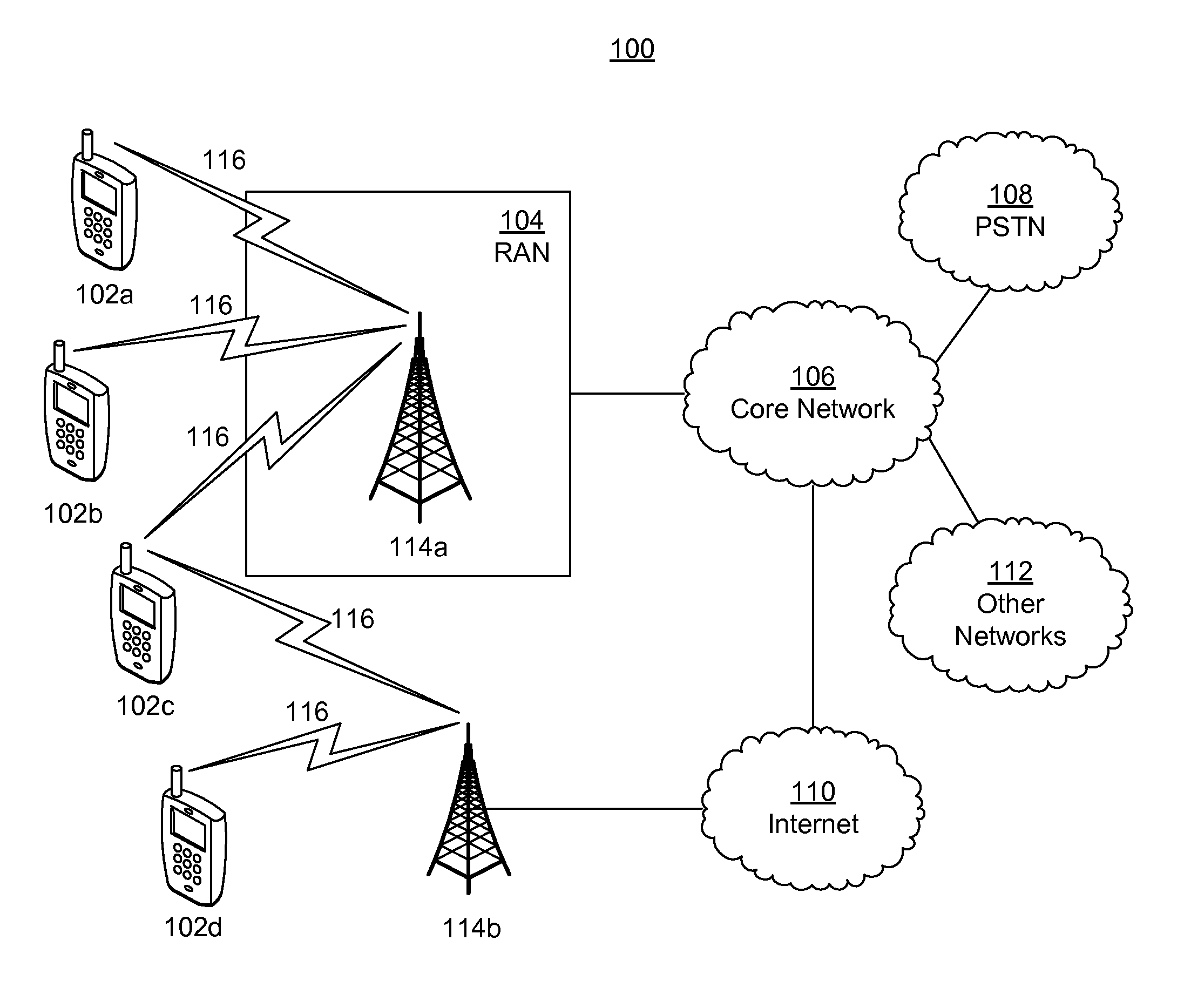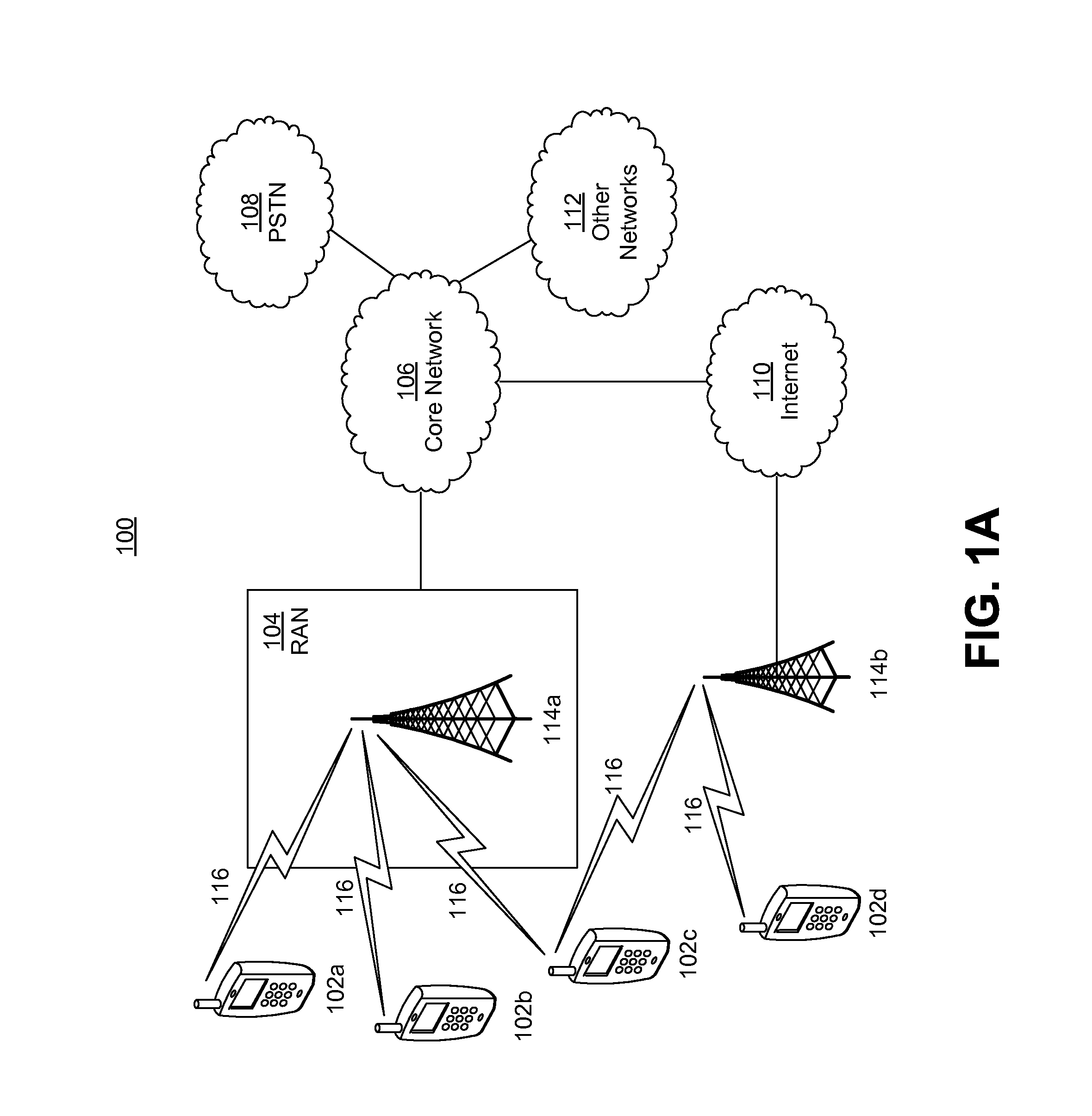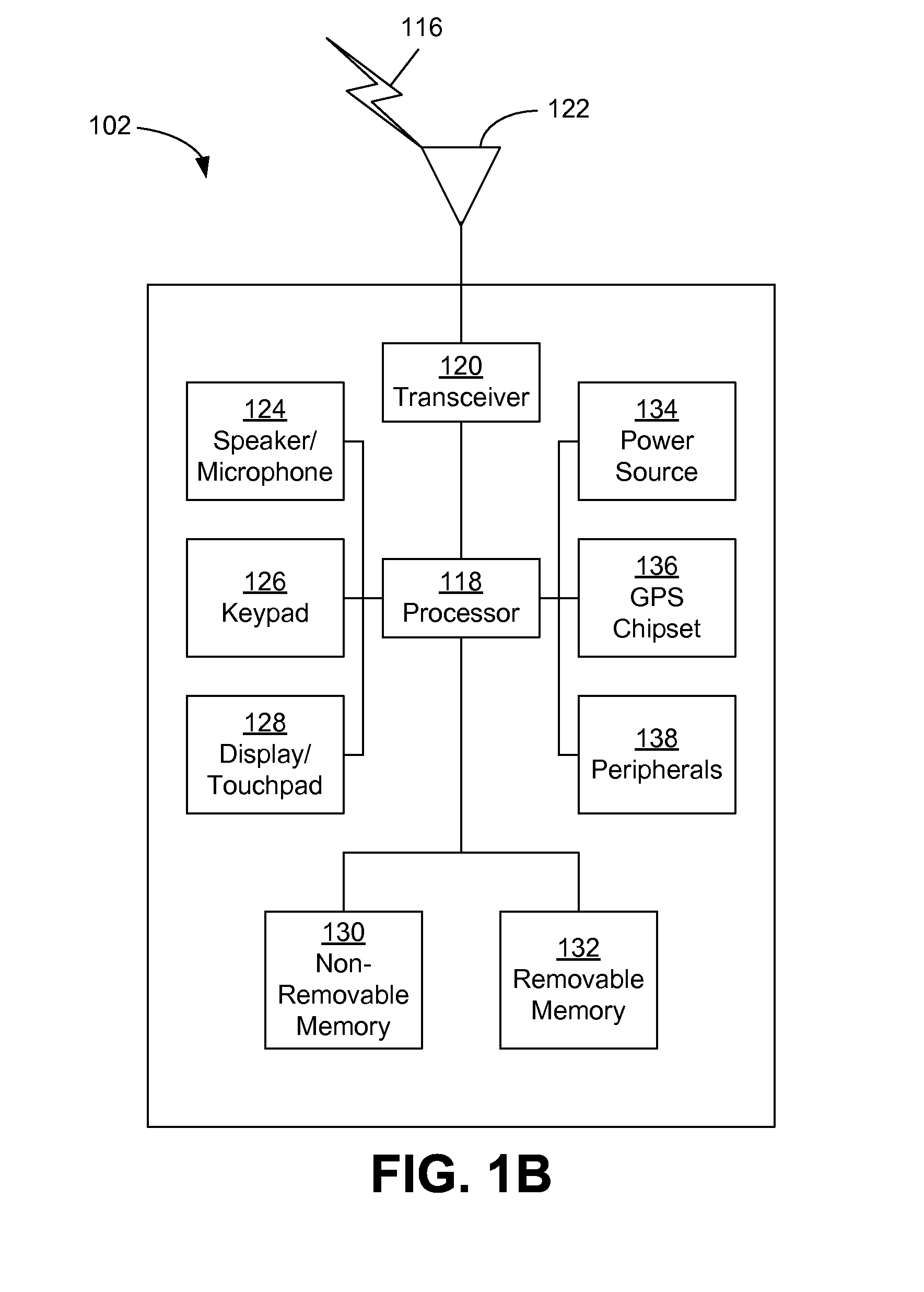Methods, systems and apparatuses for network assisted interference cancellation and suppression in long-term evolution (LTE) systems
a technology of network assisted interference and suppression, applied in the field of wireless communication, can solve the problems of increasing the overall interference landscape and the cost of deployment, and achieve the effect of suppressing the interferen
- Summary
- Abstract
- Description
- Claims
- Application Information
AI Technical Summary
Benefits of technology
Problems solved by technology
Method used
Image
Examples
example architecture
[0036]When referred to herein, the terms “user equipment” and its abbreviation “UE” may mean (i) a wireless transmit and / or receive unit (WTRU), such as described infra; (ii) any of a number of embodiments of a WTRU, such as described infra; (iii) a wireless capable and / or wired capable (e.g., tetherable) device configured with, inter alia, some or all structures and functionality of a WTRU, such as described infra; (iii) a wireless capable and / or wired capable device configured with less than all structures and functionality of a WTRU, such as described infra; or (iv) the like. Details of an example WTRU, which may be representative of any UE recited herein, are provided below with respect to FIGS. 1A-1C.
[0037]When referred to herein, the terms “evolved Node-B” and its abbreviations “eNB” and “eNode-B” may mean (i) a base station, such as described infra; (ii) any of a number of embodiments of a base station, such as described infra; (iii) a device configured with, inter alia, some...
PUM
 Login to View More
Login to View More Abstract
Description
Claims
Application Information
 Login to View More
Login to View More - R&D
- Intellectual Property
- Life Sciences
- Materials
- Tech Scout
- Unparalleled Data Quality
- Higher Quality Content
- 60% Fewer Hallucinations
Browse by: Latest US Patents, China's latest patents, Technical Efficacy Thesaurus, Application Domain, Technology Topic, Popular Technical Reports.
© 2025 PatSnap. All rights reserved.Legal|Privacy policy|Modern Slavery Act Transparency Statement|Sitemap|About US| Contact US: help@patsnap.com



